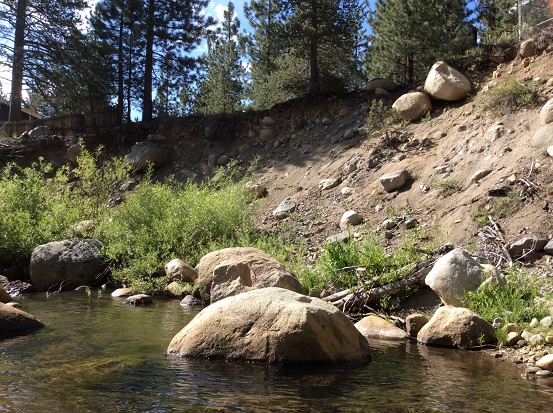by Michele Prestowitz, Program Manager
Several years ago I went for a morning swim in Donner Lake with a friend. We planned to swim from Dog Beach to “Poop Rock” along the south shore. Despite being an amazing athlete, she wasn’t comfortable swimming in open water, particularly if the water was murky. That morning, she had to take several calming breathes before diving into the clouds of sediment.
Since then, I’ve learned a lot about Donner Lake and its tributaries. Did you know Donner Lake is listed as polluted by the US EPA? That Donner Creek is a large contributor of sediment to the Truckee River? How does this impact ecological health? Or people relying on our watershed for water supply and recreation? Those are serious problems for an area people consider “pristine”.
That’s why the Truckee River Watershed Council jumped in to find answers. This year, we completed the Donner Basin Assessment. We studied the natural characteristics of the watershed, 150-year history of disturbances, and conditions today.
And we identified dozens of restoration, protection and management opportunities. Some reinforce existing programs, like aquatic invasive species inspections. Others are new, like restoration along Donner Creek. Now we will share these findings with partners and potential funders.
Someday I will swim the length of Donner Lake. And I know when I do, I won’t just think about the frigid cold (!) but instead how thankful I am that the Watershed Council is here to point the way.
For more information, read the full report. Or join us for a presentation on Monday, April 25th, 5:30-7PM at the Truckee Donner PUD.
Thanks to our partners, stakeholders, and consultants.
Special thanks to our funders whose generous support makes this work possible:
- Truckee River Watershed Council donors
- Laird Norton Family Foundation
- Western Nevada Community Foundation, Truckee River Fund

Severe bank erosion on Donner Creek downstream of the Railroad culvert. The Donner Basin Assessment identifies several opportunities to improve water quality and habitat, as well as protect infrastructure. Photo: Jai Singh
